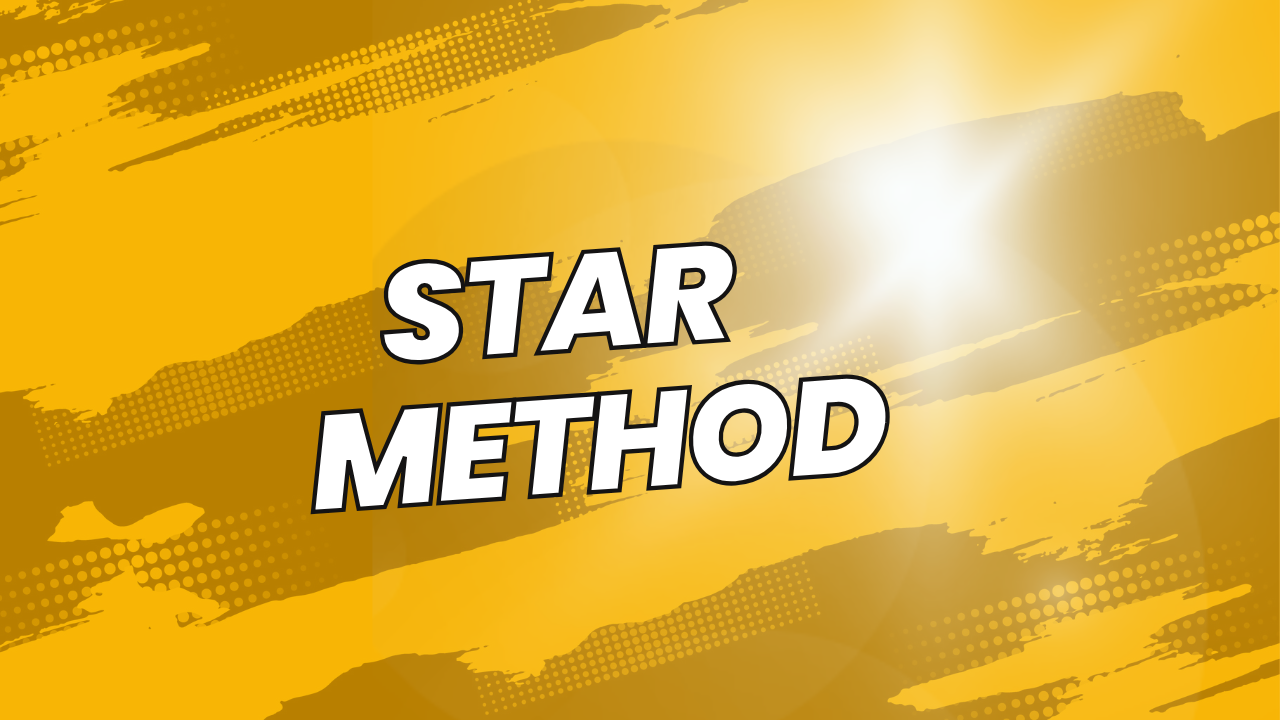Table of Contents
When preparing for a job interview, it’s essential to not only prepare for the types of questions you might be asked but also to have a structured method for answering them effectively. One widely recommended technique is the STAR method, which stands for Situation, Task, Action, and Result.
This approach helps candidates provide clear, concise, and compelling responses, particularly for behavioral interview questions. This article will dive into the details of the STAR method and how to apply it to answer interview questions successfully.
Understand the STAR Method
Situation
The first component of the STAR method is the “Situation.” This involves setting the context for your story by describing a specific event or challenge you faced. It is crucial to provide enough detail to make the situation understandable but not so much that it becomes overwhelming. Think of this as painting a picture for the interviewer so they can visualize the scenario.
Example:
“In my previous role as a project manager at XYZ Corporation, we encountered a situation where a critical project was at risk of missing its deadline due to unforeseen resource constraints.”
Task
The “Task” section involves explaining the specific responsibility or objective you had in that situation. This helps to highlight your role and what was expected of you. It’s essential to clearly articulate your responsibility and how it fit into the overall scenario.
Example:
“As the project manager, my task was to devise a plan to ensure the project stayed on track despite the limited resources.”
Action
In the “Action” part, you detail the steps you took to address the task or challenge. This is where you showcase your problem-solving skills, decision-making abilities, and the actions you took to overcome obstacles. Be specific about what you did, why you did it, and how it contributed to resolving the issue.
Example:
“I organized a series of meetings with key stakeholders to reallocate resources efficiently. I also implemented a new project management tool to enhance team collaboration and streamline communication.”
Result
The final component is the “Result,” where you describe the outcome of your actions. This is your opportunity to highlight the positive impact of your efforts, whether it be meeting a deadline, increasing efficiency, or achieving a specific goal. Whenever possible, quantify your results to provide tangible evidence of your success.
Example:
“As a result of these actions, the project was completed on time and exceeded client expectations, leading to a 15% increase in customer satisfaction scores.”
Why the STAR Method is Effective
The STAR method is highly effective because it helps candidates provide structured and comprehensive answers. It ensures that responses are not only relevant but also clearly demonstrate the candidate’s skills and achievements. Here are some additional benefits of using the STAR method:
- Clarity and Focus: By breaking down your answer into distinct sections, the STAR method helps maintain clarity and focus, making it easier for interviewers to follow your narrative.
- Showcasing Skills: The method allows you to systematically showcase your skills and how they have been applied in real-world situations.
- Confidence Building: Having a structured approach can boost your confidence during the interview, as you have a clear framework to rely on.
- Relevance: The STAR method ensures that your answers are relevant to the questions asked, providing specific examples rather than vague generalities.
Applying the STAR Method to Common Interview Questions
1. “Can you describe a time when you faced a significant challenge at work?”
STAR Response:
- Situation: “In my role as a marketing coordinator, our team faced a significant challenge when our main campaign was unexpectedly cut by 30% due to budget constraints.”
- Task: “My task was to redesign the campaign to fit the new budget while still achieving our marketing goals.”
- Action: “I collaborated with the creative team to identify cost-saving measures, such as leveraging more digital channels and reducing print materials. I also negotiated better rates with our vendors.”
- Result: “The revamped campaign was launched on time and achieved a 20% higher engagement rate than our previous efforts, despite the reduced budget.”
2. “Tell me about a time when you had to work with a difficult team member.”
STAR Response:
- Situation: “While working on a cross-functional project, I encountered a team member who consistently missed deadlines, affecting the entire project timeline.”
- Task: “I needed to address the issue to ensure the project’s success while maintaining a positive working relationship.”
- Action: “I scheduled a one-on-one meeting with the team member to discuss the challenges they were facing. Together, we identified areas where they needed support and adjusted their workload accordingly.”
- Result: “Following our discussion, the team member improved their performance, and the project was completed on schedule, receiving positive feedback from senior management.”
3. “Give an example of a goal you set and how you achieved it.”
STAR Response:
- Situation: “In my role as a sales representative, I set a personal goal to increase my quarterly sales by 25%.”
- Task: “The task was to develop and implement strategies that would help me reach this ambitious target.”
- Action: “I focused on expanding my client base by attending networking events and leveraging social media to connect with potential customers. I also enhanced my follow-up process to maintain strong relationships with existing clients.”
- Result: “By the end of the quarter, I had increased my sales by 30%, surpassing my initial goal and earning recognition as the top performer in my team.”
Tips for Using the STAR Method Effectively
1. Practice Your Stories
Before the interview, practice your STAR stories so you can recall them easily and deliver them naturally. Having a few well-rehearsed examples will make you feel more prepared and confident.
2. Tailor Your Responses
Customize your STAR examples to match the job description and the specific skills the employer is seeking. This will make your answers more relevant and impactful.
3. Be Concise
While it’s important to provide enough detail, avoid rambling. Keep your responses concise and to the point, focusing on the most critical elements of your story.
4. Quantify Results
Whenever possible, include quantifiable results in your “Result” section. Numbers and metrics provide tangible proof of your achievements and can leave a lasting impression on the interviewer.
5. Stay Positive
Even when discussing challenges or difficult situations, maintain a positive tone. Focus on what you learned and how you grew from the experience.
Our Recommendation
The STAR method is a powerful tool for answering behavioral interview questions effectively. By structuring your responses around Situation, Task, Action, and Result, you can provide clear, concise, and compelling answers that showcase your skills and achievements.
Remember to practice your stories, customize your responses to the job, and focus on quantifiable results. With the STAR method, you’ll be well-prepared to impress your interviewers and secure your desired role.

Shridhar is a passionate career coach and expert writer with a focus on professional growth, job search strategies, and personal development. With years of experience in the corporate world, Shridhar understands the challenges professionals face in advancing their careers.


